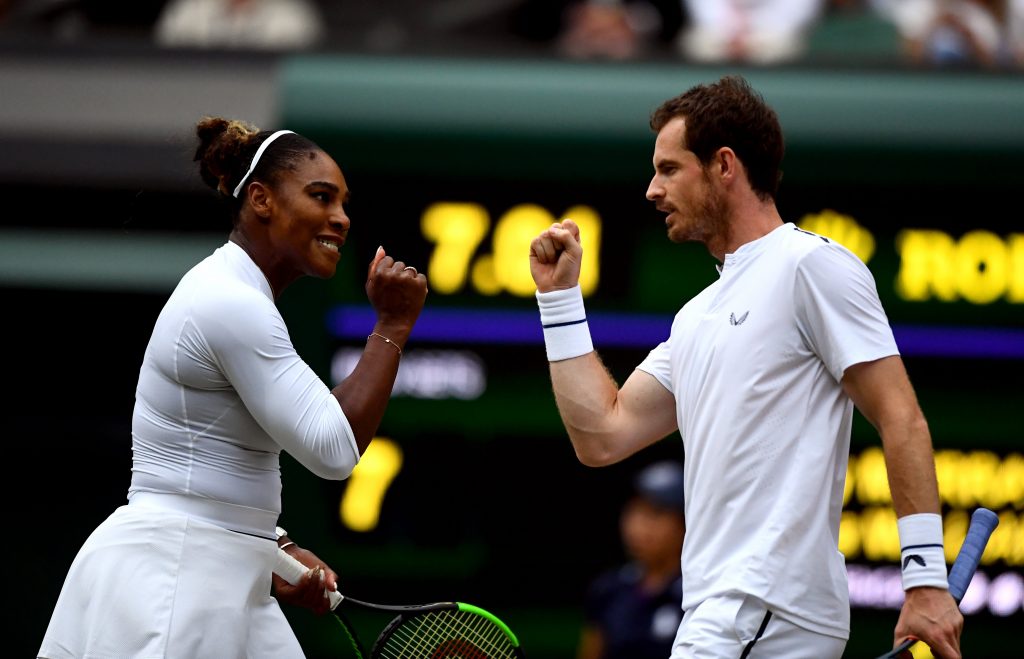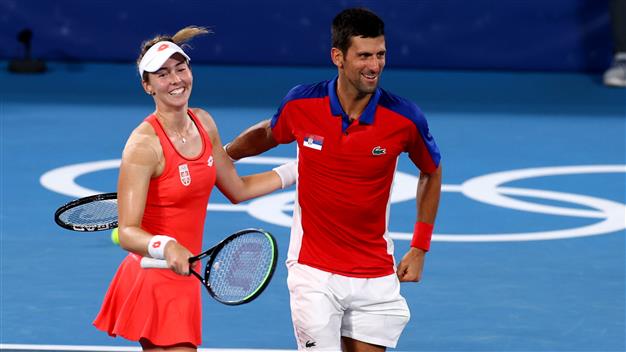The unique allure of tennis doubles mixed at Grand Slam tournaments encapsulates a thrilling blend of men’s and women’s play styles, creating a spectacle that captivates tennis enthusiasts worldwide. This format, not merely a test of skill but also of strategy, invites players from both genders to combine their strengths in pursuit of the prestigious titles offered by the likes of Wimbledon, the US Open, and other major venues. The mixed doubles category, often highlighted by unexpected pairings and dynamic duels, not only enhances the competitive landscape but also enriches the fan experience with its distinctive charm and unpredictability. As we delve into the strategic nuances of this engaging game mode, it’s clear why tennis doubles mixed continues to be a highlight of the tennis calendar at each Grand Slam event.
Historical context and evolution
The history of tennis doubles mixed at Grand Slam tournaments, particularly on the iconic grass courts of Wimbledon, is rich with notable pairings and evolutionary milestones. Mixed doubles tennis has transformed significantly, both in strategy and popularity, especially highlighted during events like Wimbledon, where it has become a beloved fixture:
- 1887: The introduction of mixed doubles in major tournaments, with Wimbledon incorporating the category later in 1913, showcasing early adaptability and excitement around mixed gender matches.
- Notable pairings: Iconic duos such as Billie Jean King and Owen Davidson who clinched multiple titles in the late 1960s and early 1970s, highlighting the early dominance and strategic play that set a precedent for future pairs.
- Evolution in popularity: Initially viewed as a secondary event, mixed doubles grew in prominence through compelling performances and increasing spectator interest, shifting perceptions to see it as a highlight of the Grand Slams.
- Strategic shifts: Over the decades, the strategy in mixed doubles has evolved, with players increasingly utilizing unique combinations of men’s power and women’s finesse to dominate the game, reflecting a deeper integration of mixed team dynamics in planning and play.
- Recent highlights: Modern pairings like Serena Williams and Andy Murray in 2019 at Wimbledon have continued to draw significant global attention, underscoring the enduring appeal and competitive excitement of mixed doubles.
This evolution underscores how tennis doubles mixed has not only adapted to changing times but has thrived, turning into a central feature of Grand Slam tournaments that celebrates gender inclusivity and strategic complexity.
The process of forming teams
Selecting a partner for tennis doubles mixed events like those at Grand Slam tournaments involves a blend of strategy, social networking, and sometimes, serendipity. Players like Coco Gauff showcase modern methods of partner selection that extend beyond traditional coach or management setups. Here’s a deeper look into how partnerships are typically formed in the professional circuit:
- Social media influence: In a recent turn of events that captured public attention, Coco Gauff utilized Twitter to search for a mixed doubles partner ahead of Wimbledon 2021. This public call-out led to playful interactions with potential partners, highlighting how social media has become a vital tool in the decision-making process.
- Formal agreements: Despite the casual nature of some social media interactions, forming a doubles team is often a strategic decision influenced by both players’ coaches and management teams. These formal agreements consider factors such as complementary playing styles, mutual competitiveness, and the potential for synergy.
- Player preferences: Players often prefer partners whose game complements their own. For instance, a player with a strong serve might pair with someone who excels at net play. This strategic pairing maximizes coverage and effectiveness on the court.
- Coach recommendations: Coaches play a crucial role in the selection process, often using their networks and knowledge of other players’ strengths and weaknesses to recommend suitable partners. This was evident when Serena Williams’ coach facilitated her iconic pairing with Andy Murray for Wimbledon 2019.
- Past success: Players also consider past successes when choosing partners. Previous tournament wins or successful matches can lead to repeat pairings, as players seek to replicate their earlier successes.
The dynamics of team formation in mixed doubles are as complex as the game itself, involving an intricate mix of personal preferences, professional recommendations, and the strategic pursuit of a competitive edge.

Strategy and gameplay in mixed doubles Tennis
Unique Gameplay Dynamics Mixed doubles tennis combines the diverse strengths and styles of both male and female players, creating unique strategic opportunities and challenges. Men typically bring powerful serves and baseline shots to the game, while women often excel in agility and finescale volley techniques. This blend necessitates a strategy that leverages these strengths effectively. For instance, in serving strategies, males might focus on power serves to set up softer returns that female partners can intercept at the net.
Specific rules and regulations
The rules of mixed doubles tennis also dictate specific strategic moves. For example, the International Tennis Federation stipulates that the serve must be conducted in a diagonal fashion, from the server to the opponent of the same gender. This rule shapes how players position themselves and plan their serving strategies. Additionally, the format of mixed doubles often includes a deciding point at deuce and a match tie-break instead of a third set in some tournaments, influencing how aggressively teams play in critical points.
Team coordination and communication
Effective communication and coordination are paramount in mixed doubles. Teams must synchronize their movements and shots, predicting and complementing each other’s play style. This coordination is often developed through extensive practice sessions where partners work on specific drills that enhance their understanding, such as alternating baseline and net plays or coordinating poaching movements.
Tactical adaptations
Adapting tactics based on the opponents’ weaknesses and strengths is crucial. Mixed doubles teams often analyze their opponents’ previous games to devise strategies, such as targeting the weaker link with challenging shots like lobs or fast-paced volleys. The decision on who plays the ad side (the left side of the tennis court) and who plays the deuce side can also be strategic, often based on each player’s forehand or backhand strengths and their ability to intercept and return serves.
In conclusion, the gameplay of tennis doubles mixed is richly complex, demanding a deep understanding of both the rules and the nuanced interplay between different playing styles. Successful teams blend these elements seamlessly, turning each match into a showcase of strategic mastery and coordination.
High-Profile examples
The pairing of Serena Williams and Andy Murray for the Wimbledon 2019 mixed doubles tournament is a prime example of how high-profile teams can captivate global audiences and enhance the sport’s appeal. Their partnership, often referred to by the moniker “MurRena,” was among the most anticipated events of the tournament, drawing significant media attention and public interest.
- Wimbledon 2019: Serena Williams, a 23-time Grand Slam singles champion, teamed up with two-time Wimbledon singles champion Andy Murray in a partnership that was unexpected but celebrated. Their debut as a team on July 6, 2019, was met with widespread media coverage and became a focal point of the tournament, showcasing the immense pull of star power in tennis doubles mixed.
- Media spotlight: This pairing not only filled the stands but also dominated sports headlines worldwide, demonstrating the significant impact such collaborations have on the visibility of mixed doubles. The matches featuring Williams and Murray were among the most viewed during the tournament, illustrating how star-studded teams can elevate the profile of mixed doubles competition.
- Impact on popularity: The buzz created by such teams extends beyond the confines of the tennis courts, sparking discussions on social media and sports forums, and even drawing in viewers who might not typically watch tennis. This increase in attention can lead to greater interest in mixed doubles at other tournaments, highlighting the format’s unique appeal.
- Legacy and inspiration: Beyond their performance, high-profile teams like Williams and Murray inspire upcoming players to participate in mixed doubles, showcasing the format as a serious and competitive component of professional tennis.
These examples underline the transformative effect that renowned players can have when they come together for mixed doubles, not just in terms of game dynamics but also in popularizing the sport across diverse audiences.
The future of tennis doubles mixed at Grand Slams promises innovations in technology and rule adaptations, enhancing both strategic gameplay and viewer engagement. As the format attracts more top players, its popularity is set to increase, spotlighting the unique interplay of male and female talents in tennis.

Recent Comments